A tragic day in 1953
Posted by Chris Graham on 9th March 2023
Russell Plummer recalls the tragic day in 1953 when the car ferry Princess Victoria sank in the Irish Sea, with just 44 survivors.
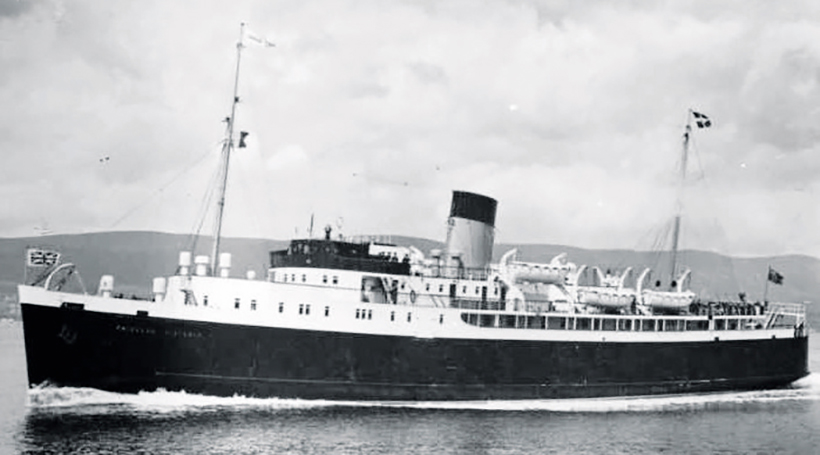
The tragic day in 1953: The 2,694gt Princess Victoria was one of the earliest roll-on/roll-off (ro-ro) ferries, and was completed in 1947, being able to carry up to 1,500 passengers as well as cars and lorries.
Introduced in 1948 for the London, Midland and Scottish Railway’s Irish Sea North Channel service between Scottish port Stranraer and Larne in County Antrim, the 1947-launched car ferry Princess Victoria, by then under British Rail management, set off from Loch Ryan in Scotland at 08:45 on the last day of January, in 1953.
Leaving the comparative shelter of the loch, she immediately turned into the full fury of one of the worst storms to strike the Irish Sea in living memory, and which caused havoc on both sides of the North Sea as well as on land in Holland.
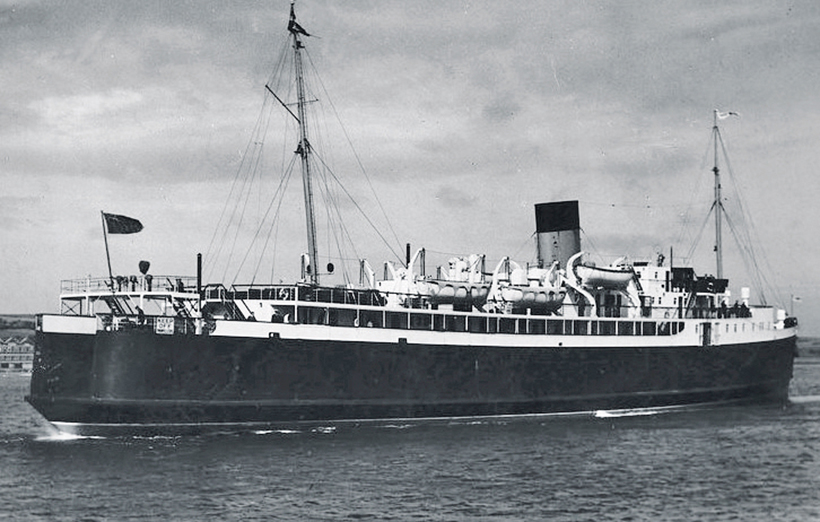
Carrying a reported 128 passengers and 51 crew, Princess Victoria was an hour into the journey when heavy following seas forced open the vehicle deck’s stern doors. The alarm was raised when Captain James Ferguson, with 17 years of experience on the route, radioed the coastguard after 11:00 to report that the vessel was not under control and urgently needed tug support.
He was on the radio again at 12:52 to say that the engine room was flooded and that he had decided to abandon ship. Measuring 5ft 7in tall, the stern doors were not full height, and efforts to lower a protective internal safety shield failed while the water rushed in.
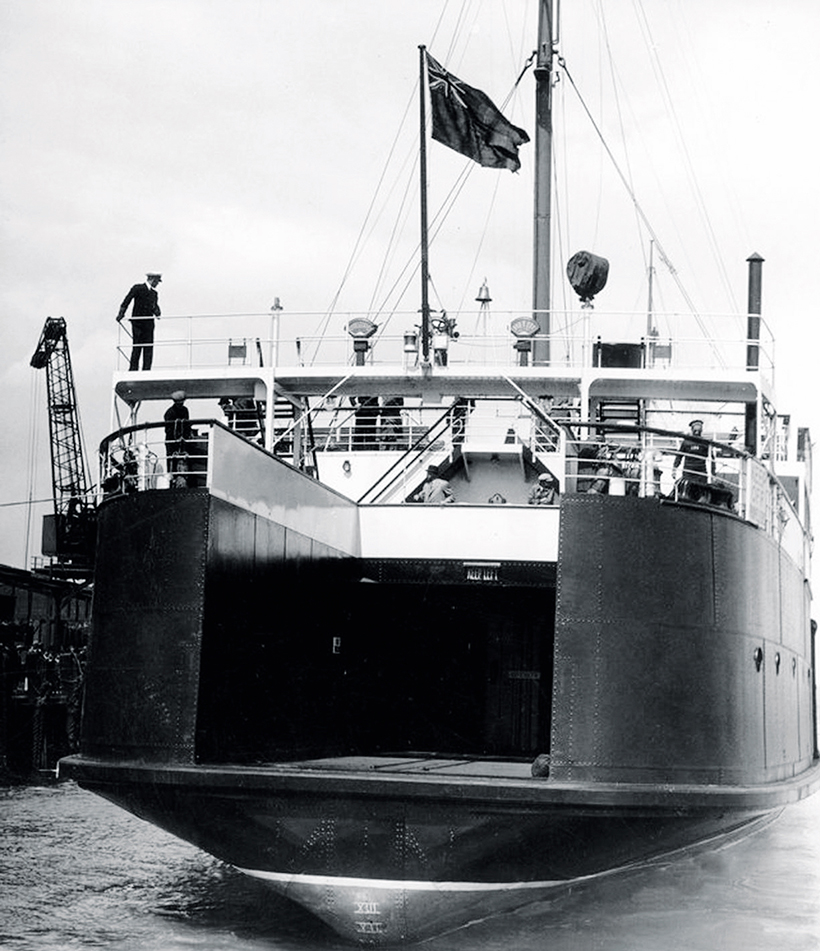
A stern view of Princess Victoria with recessed rear door through which water entered in 1953.
As the vessel listed heavily to starboard, it became impossible to launch lifeboats, one of then smashing against the ship’s side during a lowering attempt. With the Northern Ireland coast visible on the starboard side, Princess Victoria sank five miles north of the Copeland Islands in the late afternoon, with Captain Ferguson going down with his ship while just 44 passengers were rescued, all of them male.
Other vessels to reach the area included the C class destroyer HMS Contest, the Royal Navy’s first all-welded vessel which was built by J Samuel White at Cowes, and commissioned in 1949, and was in what turned out to be her final year of Royal Navy service before being scrapped during 1960.
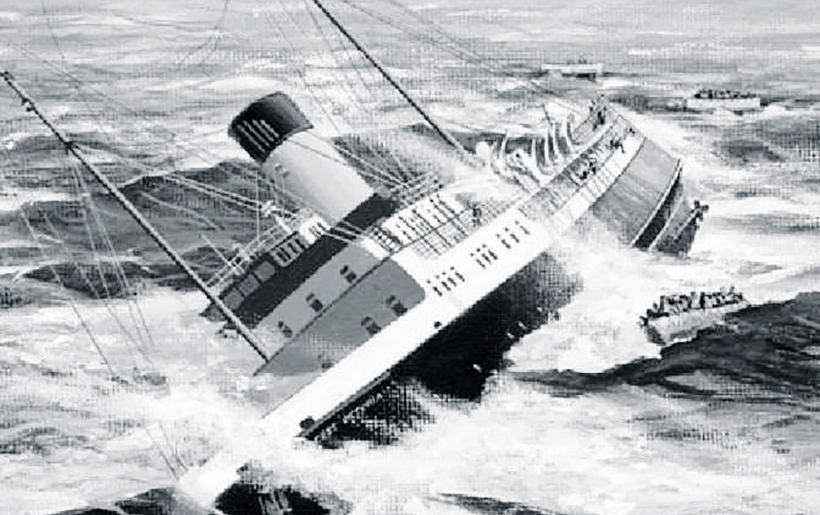
Princess Victoria founders in the Irish Sea, from a painting by Norman Whitla.
Contest was on the scene after sailing from the Clyde, and her commanding officer, Lieut Commander Lawrence McArdle, and Chief Petty Officer Wilfred Warren dived into the sea in a bid to help survivors, actions which later saw both made members of the Order of the British Empire.
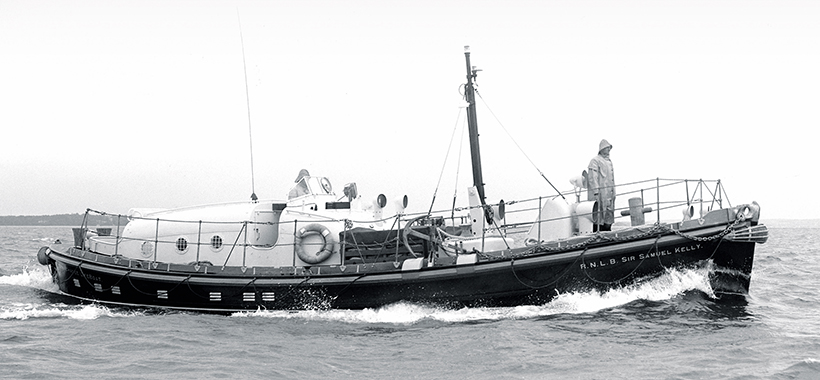
The Donaghadee lifeboat, Sir Samuel Kelly, on trials in 1950, prior to being sent to her station. She has been on display in the car park close to the lifeboat station and the harbour, and is now under restoration.
RNLI lifeboats from Donaghadee and Portpatrick also joined the search. Jeanie Spiers from Portpatrick could not find the casualty and so, in the appalling conditions, began what turned out to be a long search. Donaghadee lifeboat Sir Samuel Kelly reached the ferry at 15:15, seven miles east of Belfast Lough, and rescued 29 people from a ship’s lifeboat, one from a raft and another from a second ship’s lifeboat.
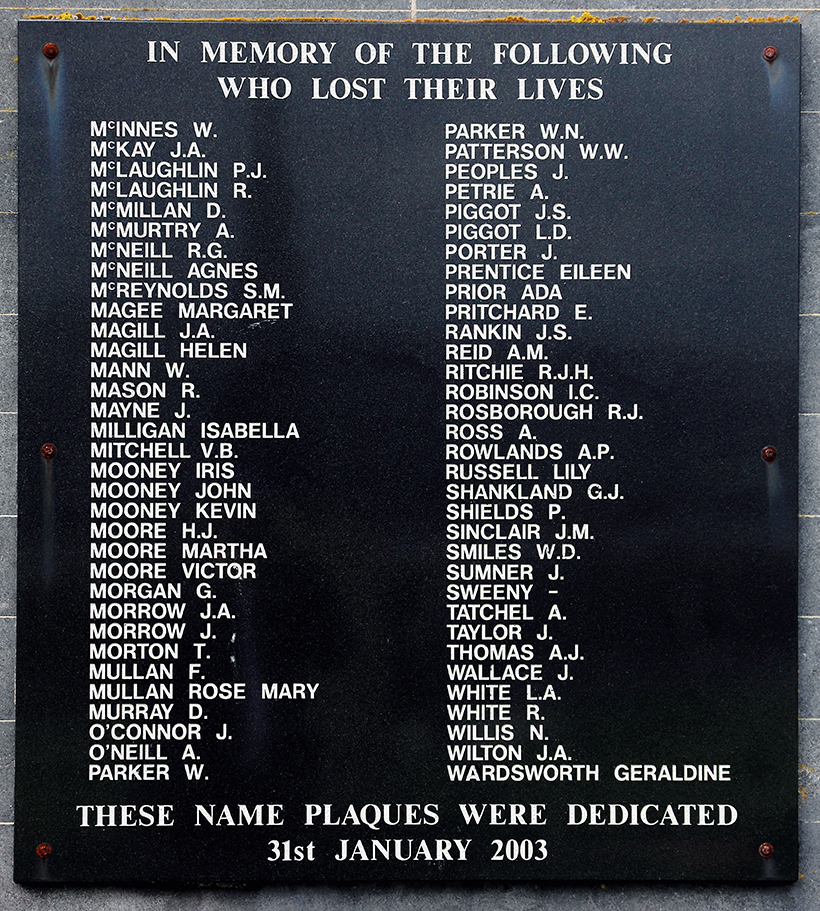
The names of those who lost their lives in the 1953 tragedy are recorded on the memorial in Larne.
The coxswains of both boats, Hugh Nelson of Donaghadee and William McConnell of Portpatrick, were awarded the RNLI’s bronze medal as well as the British Empire Medals for their bravery and outstanding seamanship. Major memorials recording the names of those who died have been erected in Stranraer and Larne, where there are annual memorial services.
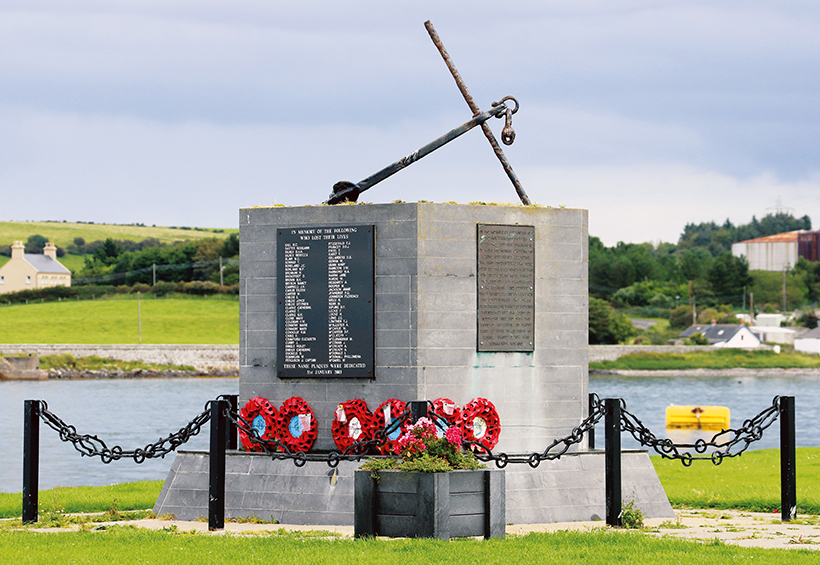
The memorial at the entrance to Larne harbour was erected in 2003.
Captain Ferguson and Princess Victoria’s radio officer, David Broadfoot, who sent messages by Morse code after radio connections were lost, were each given the posthumous award of Britain’s highest civilian honour, the George Cross.

The memorial close to the Ferry Terminal in Stranraer.
North Channel services have changed out of all recognition in recent years, with Stranraer dropped in 2011 when Stena Line who had been using HSS1500 series catamaran Stena Voyager, moved to a new £200 million terminal at Cairnryan. There was also a port change in Northern Ireland, from Larne to Belfast, with the route using 2002-built sisterships Stena Superfast VII and Stena Superfast VIII. The Stena pair have competition from P&O Ferries, who use European Causeway (2000) and European Highlander (2002) from Cairnryan on crossings to Larne.
This feature comes from the latest issue of Ships Monthly, and you can get a money-saving subscription to this magazine simply by clicking HERE
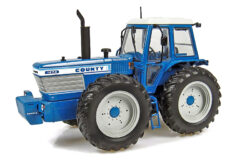
Previous Post
Latest diecast and resin models to collect
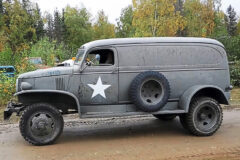
Next Post
The wartime history of General Motors



